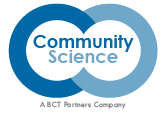Research has shown that adverse childhood experiences (ACEs) involving child abuse, neglect, and household violence as well as mental illness, incarceration, and substance abuse are linked to a lifetime of poor health outcomes. ACEs disrupt brain development and harm the immune system, resulting in cognitive impairment, risky health behaviors, chronic disease, and early death. An international network of researchers, health officials, foundations, service agencies, and community advocates is working to increase awareness of the harm of ACEs and develop effective strategies for their prevention, mitigation, and treatment. As the evaluator of several important ACEs initiatives, Community Science is developing groundbreaking evaluation tools and approaches to advance the science of how to address this complex problem more effectively at multiple levels.
The issue was first identified in the 1990s when Robert Anda and Vincent Felitti, researchers from the Centers for Disease Control and Prevention (CDC) and the Kaiser Permanente Health Plan’s Department of Preventive Medicine (Kaiser), began studying the influence of adverse childhood experiences on human health and development. They identified ten types of ACEs, covering child abuse (physical, emotional, and sexual), child neglect (physical and emotional), and household dysfunction (a household in which there is mental illness, substance abuse, divorce, an incarcerated relative, or a mother treated violently). The researchers surveyed over 17,000 adults enrolled in Kaiser’s health plan in San Diego and asked them how many types of ACEs they had experienced. The study combined that information with results from patients’ physical exams to explore the role that ACEs played in their health and development.1
The study found that ACEs are very common. Almost two-thirds (64%) of the patients had at least one ACE, and most of those had several ACEs. About one in eight (12%) had four or more.2 The study found that as the number of ACEs increases, so does the risk for negative health outcomes. Specifically, the study showed dramatic links between ACEs, risky behavior (smoking, alcoholism, drug use, and missed work), psychological issues (depression and suicide attempts), serious health conditions (sexually transmitted diseases and broken bones), and the leading causes of death (including heart disease, cancer, and stroke). People with six or more ACEs died 20 years earlier, on average, than those without ACEs. Since that time, more than 70 additional studies have corroborated these findings.3
More importantly, advances in neuroscience research have identified the epigenetic (biological) impacts of ACEs that are linked to poor health. The latest evidence shows that the toxic stress associated with exposure to childhood adversity affects brain development, the endocrine (hormonal) system, and the immune system, impairing decision-making, impulse control, and resistance to disease – precursors to disruptions in cognitive development, increases in risky health behaviors, and early onset of disease. These links are shown in a revised “ACEs Pyramid” adapted from the original ACEs study by the Center for Youth Wellness (see Figure 1).4
National leaders in health care, public health, and child development conclude that the enormity of these findings cannot be overstated. Dr. Robert Block, the former head of the American Academy of Pediatrics, named ACEs “the single greatest unaddressed public health threat facing our nation today.”5 In response, an international network of researchers, foundations, state and national government leaders, social service agencies, and concerned communities is working to increase awareness and understanding of the impact of ACEs and the need to develop effective innovative interventions to prevent, mitigate, and treat ACEs.6 These initiatives include research on science-based treatment programs, public health initiatives highlighting the “essentials of childhood,” and conferences focusing on the dissemination of ACEs-related research and best practices.7
Figure 1: Revised ACEs Pyramid. Source: Center for Youth Wellness.
Community Science is involved in several of these initiatives, including the evaluations of the ACEs Public Private Initiative (APPI) and Change in Mind initiative. APPI is a group of public, private, and community organizations studying how communities can work across sectors to develop and implement policies and practices to prevent childhood trauma and reduce its effects, and translate that research into practice. Along with Mathematica Policy Research, Community Science is co-leading APPI’s Study of Community-based Family Support Networks in Washington State.8 Community Science is also evaluating the Change in Mind: Applying Neurosciences to Revitalize Communities initiative of the Alliance for Strong Families and Communities, conducted in partnership with the Robert Wood Johnson Foundation and the Palix Foundation’s Alberta Family Wellness Initiative (see this issue).
Through these projects, Community Science is developing important new tools to advance the science of how to address ACEs more effectively at multiple levels: increasing individual awareness, improving program outcomes, changing organizational practices, collaborating on systems change, and advocating for new policies. For the APPI evaluation, we are creating the APPI Collective Community Capacity Index, addressing ACEs, resilience, and healthy child development. For the Change in Mind evaluation, we are working to develop and test multilevel theories of change, using rapid-cycle developmental evaluation methods. For more information about these evaluations, measures, and methods, please contact Meg Hargreaves at mhargreaves@communityscience.com.

